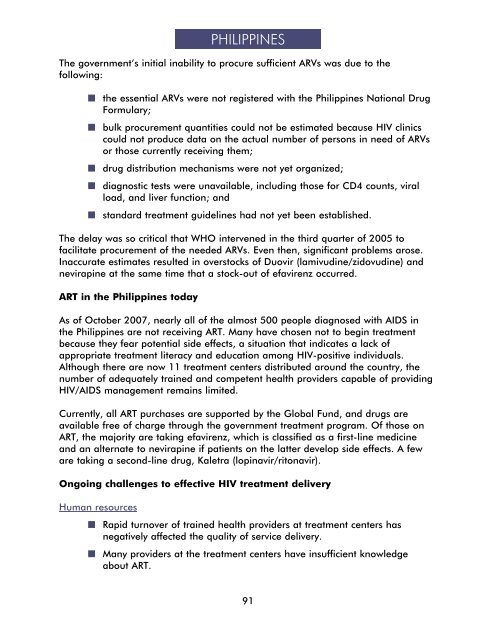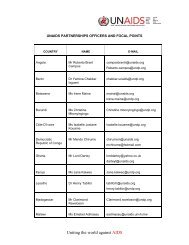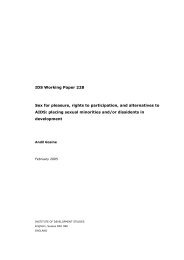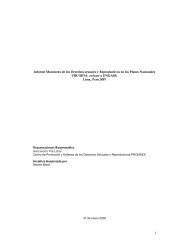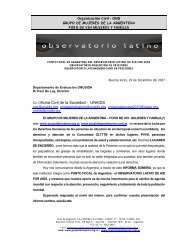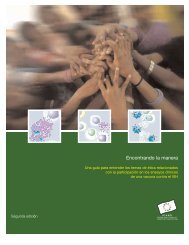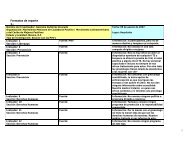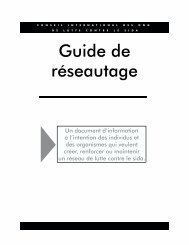Missing the Target #5: Improving AIDS Drug Access ... - CD8 T cells
Missing the Target #5: Improving AIDS Drug Access ... - CD8 T cells
Missing the Target #5: Improving AIDS Drug Access ... - CD8 T cells
Create successful ePaper yourself
Turn your PDF publications into a flip-book with our unique Google optimized e-Paper software.
The government’s initial inability to procure sufficient ARVs was due to <strong>the</strong>following:<strong>the</strong> essential ARVs were not registered with <strong>the</strong> Philippines National <strong>Drug</strong>Formulary;bulk procurement quantities could not be estimated because HIV clinicscould not produce data on <strong>the</strong> actual number of persons in need of ARVsor those currently receiving <strong>the</strong>m;drug distribution mechanisms were not yet organized;diagnostic tests were unavailable, including those for CD4 counts, viralload, and liver function; andstandard treatment guidelines had not yet been established.The delay was so critical that WHO intervened in <strong>the</strong> third quarter of 2005 tofacilitate procurement of <strong>the</strong> needed ARVs. Even <strong>the</strong>n, significant problems arose.Inaccurate estimates resulted in overstocks of Duovir (lamivudine/zidovudine) andnevirapine at <strong>the</strong> same time that a stock-out of efavirenz occurred.ART in <strong>the</strong> Philippines todayAs of October 2007, nearly all of <strong>the</strong> almost 500 people diagnosed with <strong>AIDS</strong> in<strong>the</strong> Philippines are not receiving ART. Many have chosen not to begin treatmentbecause <strong>the</strong>y fear potential side effects, a situation that indicates a lack ofappropriate treatment literacy and education among HIV-positive individuals.Although <strong>the</strong>re are now 11 treatment centers distributed around <strong>the</strong> country, <strong>the</strong>number of adequately trained and competent health providers capable of providingHIV/<strong>AIDS</strong> management remains limited.Currently, all ART purchases are supported by <strong>the</strong> Global Fund, and drugs areavailable free of charge through <strong>the</strong> government treatment program. Of those onART, <strong>the</strong> majority are taking efavirenz, which is classified as a first-line medicineand an alternate to nevirapine if patients on <strong>the</strong> latter develop side effects. A feware taking a second-line drug, Kaletra (lopinavir/ritonavir).Ongoing challenges to effective HIV treatment deliveryHuman resourcesPHILIPPINESRapid turnover of trained health providers at treatment centers hasnegatively affected <strong>the</strong> quality of service delivery.Many providers at <strong>the</strong> treatment centers have insufficient knowledgeabout ART.91


